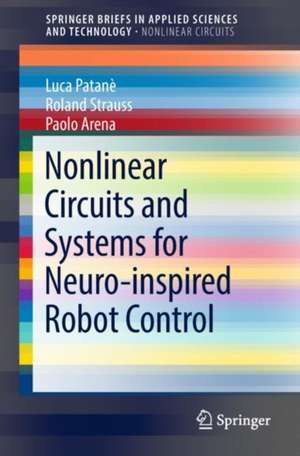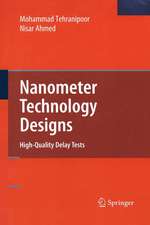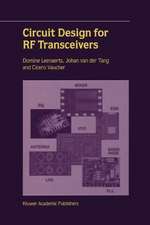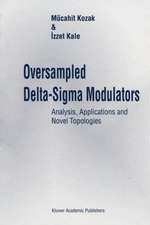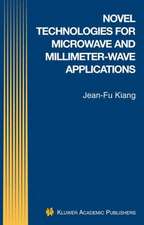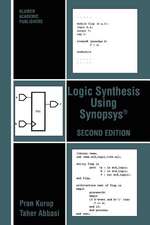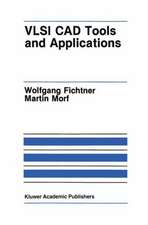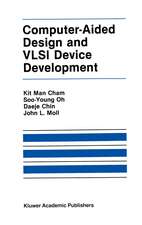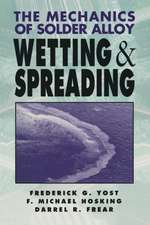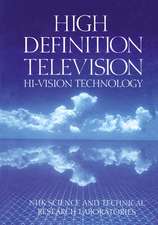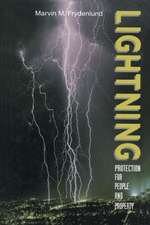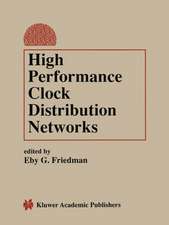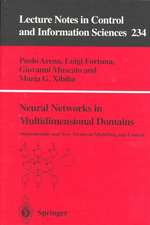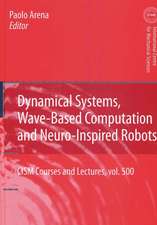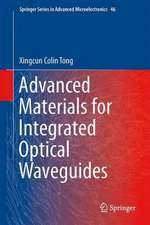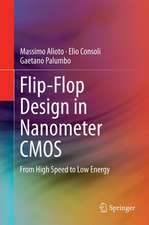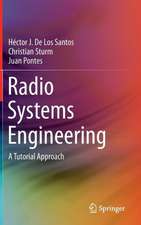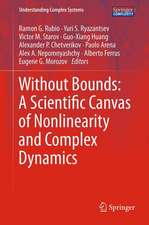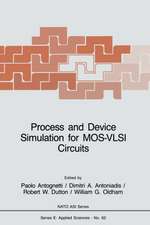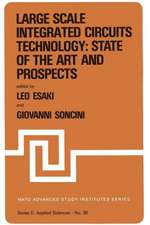Nonlinear Circuits and Systems for Neuro-inspired Robot Control: SpringerBriefs in Applied Sciences and Technology
Autor Luca Patanè, Roland Strauss, Paolo Arenaen Limba Engleză Paperback – 3 apr 2018
The book starts with a short presentation of the main areas of the Drosophila brain. These are modeled as nonlinear dynamical structures, which are then used to showcase key features like locomotion, motor learning, memory formation, and exploitation. It also discusses additional complex behaviors, such as sequence learning and perception, which have recently been discovered to exist in insects. Much of the material presented has been tested in biorobotics classes for the Master’s degree in Automation Engineering and Control of ComplexSystems at the University of Catania.
Reporting on the work fostered by several national and international research projects, the book offers researchers novel ideas on how neuro-inspired dynamics can be used in developing the autonomous machines of the future.
Din seria SpringerBriefs in Applied Sciences and Technology
-
 Preț: 380.29 lei
Preț: 380.29 lei - 17%
 Preț: 360.34 lei
Preț: 360.34 lei - 20%
 Preț: 386.12 lei
Preț: 386.12 lei -
 Preț: 380.07 lei
Preț: 380.07 lei -
 Preț: 377.95 lei
Preț: 377.95 lei -
 Preț: 382.32 lei
Preț: 382.32 lei -
 Preț: 376.59 lei
Preț: 376.59 lei -
 Preț: 379.09 lei
Preț: 379.09 lei -
 Preț: 378.12 lei
Preț: 378.12 lei - 20%
 Preț: 293.83 lei
Preț: 293.83 lei -
 Preț: 344.90 lei
Preț: 344.90 lei -
 Preț: 321.36 lei
Preț: 321.36 lei -
 Preț: 264.79 lei
Preț: 264.79 lei -
 Preț: 344.90 lei
Preț: 344.90 lei -
 Preț: 356.46 lei
Preț: 356.46 lei -
 Preț: 382.95 lei
Preț: 382.95 lei -
 Preț: 355.66 lei
Preț: 355.66 lei -
 Preț: 479.67 lei
Preț: 479.67 lei -
 Preț: 415.18 lei
Preț: 415.18 lei -
 Preț: 444.52 lei
Preț: 444.52 lei - 20%
 Preț: 301.86 lei
Preț: 301.86 lei -
 Preț: 409.43 lei
Preț: 409.43 lei - 20%
 Preț: 322.17 lei
Preț: 322.17 lei -
 Preț: 355.49 lei
Preț: 355.49 lei - 15%
 Preț: 462.51 lei
Preț: 462.51 lei -
 Preț: 377.18 lei
Preț: 377.18 lei -
 Preț: 355.93 lei
Preț: 355.93 lei -
 Preț: 382.95 lei
Preț: 382.95 lei -
 Preț: 378.12 lei
Preț: 378.12 lei -
 Preț: 378.12 lei
Preț: 378.12 lei -
 Preț: 380.07 lei
Preț: 380.07 lei -
 Preț: 380.07 lei
Preț: 380.07 lei - 20%
 Preț: 326.28 lei
Preț: 326.28 lei -
 Preț: 312.68 lei
Preț: 312.68 lei -
 Preț: 356.43 lei
Preț: 356.43 lei -
 Preț: 412.30 lei
Preț: 412.30 lei - 20%
 Preț: 225.31 lei
Preț: 225.31 lei -
 Preț: 378.12 lei
Preț: 378.12 lei -
 Preț: 376.59 lei
Preț: 376.59 lei -
 Preț: 195.87 lei
Preț: 195.87 lei -
 Preț: 376.22 lei
Preț: 376.22 lei - 20%
 Preț: 324.64 lei
Preț: 324.64 lei - 20%
 Preț: 288.73 lei
Preț: 288.73 lei -
 Preț: 377.57 lei
Preț: 377.57 lei -
 Preț: 261.91 lei
Preț: 261.91 lei -
 Preț: 381.98 lei
Preț: 381.98 lei -
 Preț: 273.64 lei
Preț: 273.64 lei -
 Preț: 410.87 lei
Preț: 410.87 lei -
 Preț: 379.68 lei
Preț: 379.68 lei -
 Preț: 374.30 lei
Preț: 374.30 lei
Preț: 348.55 lei
Nou
Puncte Express: 523
Preț estimativ în valută:
66.70€ • 69.38$ • 55.07£
66.70€ • 69.38$ • 55.07£
Carte tipărită la comandă
Livrare economică 11-17 aprilie
Preluare comenzi: 021 569.72.76
Specificații
ISBN-13: 9783319733463
ISBN-10: 331973346X
Pagini: 98
Ilustrații: XII, 99 p. 42 illus., 40 illus. in color.
Dimensiuni: 155 x 235 x 10 mm
Ediția:1st ed. 2018
Editura: Springer International Publishing
Colecția Springer
Seriile SpringerBriefs in Applied Sciences and Technology, SpringerBriefs in Nonlinear Circuits
Locul publicării:Cham, Switzerland
ISBN-10: 331973346X
Pagini: 98
Ilustrații: XII, 99 p. 42 illus., 40 illus. in color.
Dimensiuni: 155 x 235 x 10 mm
Ediția:1st ed. 2018
Editura: Springer International Publishing
Colecția Springer
Seriile SpringerBriefs in Applied Sciences and Technology, SpringerBriefs in Nonlinear Circuits
Locul publicării:Cham, Switzerland
Cuprins
Biological Investigation of Neural Circuits in the Insect Brain.- Nonlinear Neuro-inspired Circuits and Systems: Processing and Learning Issues.- Modelling Spatial Memory.- Controlling and Learning Motor Function.- Learning Spatio-temporal Behavioural Sequences.- Towards Neural Reusable Neuro-inspired Systems.- Summary and Conclusions.
Notă biografică
Paolo Arena received his first Degree in Electronic Engineering and the Ph.D. in Electrical Engineering in 1990 and in 1994, respectively, from the University of Catania, Italy. He is currently Full Professor of System Theory at the University of Catania, where he also teaches Automatic Control, Biorobotics, and Operation Research. He is the co-author of more than 300 technical papers, 5 Books and several industrial patents. His research interests include adaptive and learning systems, neural networks and optimization algorithms, cellular neural networks and collective behaviors in living and artificial neural systems for locomotion control, perception, and cognition. He is a Senior Member of the IEEE and has served as an Associate Editor of the IEEE Transaction on Circuits and Systems-Part I. Prof. Arena participated in a number of Italian and European Projects among which: DICTAM IST 1999-2003 (Dynamic Image Computing using Tera-speed Analogic visual Microprocessor); CLAWARClimbing and Walking Robots (EC BRITE-Euram III Thematic network); Italian Project Italian Space Agency (ASI) (2000–2003) “Modular Intelligent subsystems for automation and space robotics”; “Emergent methodologies for monitoring and control in FTU Systems” with ENEA/EURATOM. He was invited to deliver several keynote speeches in international conferences, among which the European Conference on Artificial Life 2013. Prof. Arena was the coordinator of two EU projects: the FP6 SPARK (Spatial temporal patterns for action-oriented perception in roving robots) and the FP7 SPARK II project (Spatial temporal patterns for action-oriented perception in roving robots: an insect brain computational model). Also he participated, as local coordinator, in the EU FP7 EMICAB project (Embodied motion intelligence for cognitive, autonomous robots).
Luca Patanè had his degree in Computer Science Engineering in 2001 at the University of Catania, Italy. In 2004 he got his Ph.D. in Automation and Electronic Engineering, discussing a work entitled: “Bio-inspired Robots: from Sensing toward Perception”. Since May 2005 he has been a research grant assignee at the University of Catania, with the research program: “Bio inspired architecture for the motion system control”. His research activities focus on Bio-inspired robotics, adaptation and learning in dynamical systems, insect inspired cognitive algorithms, and Hardware realization of bio-inspired control systems. He was actively involved in several research projects: Project “Office of the Naval Research” 2003–2004 “A CNN-based hybrid locomotion controller”, EU Project SPARK I and II, “Spatial-Temporal Patterns for Action-Oriented Perception in Roving Robots” and EMICAB. He is a member of the European Network for the Advancement of Artificial Cognitive Systems Interaction and Robotics (EUCogII Network). He has published more than 60 papers in scientific journals and conference proceedings and several chapters in books in the field of control and bio-robotics.
Roland Strauss studied Physics at the University of Würzburg, Germany and State University of New York (SUNY) at Albany, USA (Diplom and M.Sc.). He received his Ph.D. in Neurobiology in 1991 from the University of Würzburg/, Germany. Until 1998 he worked at the Max Planck Institute for Biological Cybernetics, Tübingen, Germany. In 1998 he received theBioFuture Award. He participated in the Group established in 1999 at the Biocenter of the University of Würzburg, Germany. He received his Habilitation in Neurobiology in 2003. He was a Member of the collaborative research centre “Arthropod behaviour” of the German Science Foundation (DFG). Since 2006 he has been Full Professor of Neurobiology at the Johannes Gutenberg University of Mainz, Germany. His research interests include the control of behavior in insects, locomotor control, visual orientation, Drosophila as a model for human diseases, and robot modeling.
Strauss has organized European and International conferences on Drosophila neurobiology. He has been awarded a Visiting Scientist Grant of the Howard Hughes Medical Institute at the Janelia Research Campus, Washington DC. Prof. Strauss research focuses on Drosophila mutant lines to provide information crucial to derive models and neuronal circuits underlying insect behaviors.
Luca Patanè had his degree in Computer Science Engineering in 2001 at the University of Catania, Italy. In 2004 he got his Ph.D. in Automation and Electronic Engineering, discussing a work entitled: “Bio-inspired Robots: from Sensing toward Perception”. Since May 2005 he has been a research grant assignee at the University of Catania, with the research program: “Bio inspired architecture for the motion system control”. His research activities focus on Bio-inspired robotics, adaptation and learning in dynamical systems, insect inspired cognitive algorithms, and Hardware realization of bio-inspired control systems. He was actively involved in several research projects: Project “Office of the Naval Research” 2003–2004 “A CNN-based hybrid locomotion controller”, EU Project SPARK I and II, “Spatial-Temporal Patterns for Action-Oriented Perception in Roving Robots” and EMICAB. He is a member of the European Network for the Advancement of Artificial Cognitive Systems Interaction and Robotics (EUCogII Network). He has published more than 60 papers in scientific journals and conference proceedings and several chapters in books in the field of control and bio-robotics.
Roland Strauss studied Physics at the University of Würzburg, Germany and State University of New York (SUNY) at Albany, USA (Diplom and M.Sc.). He received his Ph.D. in Neurobiology in 1991 from the University of Würzburg/, Germany. Until 1998 he worked at the Max Planck Institute for Biological Cybernetics, Tübingen, Germany. In 1998 he received theBioFuture Award. He participated in the Group established in 1999 at the Biocenter of the University of Würzburg, Germany. He received his Habilitation in Neurobiology in 2003. He was a Member of the collaborative research centre “Arthropod behaviour” of the German Science Foundation (DFG). Since 2006 he has been Full Professor of Neurobiology at the Johannes Gutenberg University of Mainz, Germany. His research interests include the control of behavior in insects, locomotor control, visual orientation, Drosophila as a model for human diseases, and robot modeling.
Strauss has organized European and International conferences on Drosophila neurobiology. He has been awarded a Visiting Scientist Grant of the Howard Hughes Medical Institute at the Janelia Research Campus, Washington DC. Prof. Strauss research focuses on Drosophila mutant lines to provide information crucial to derive models and neuronal circuits underlying insect behaviors.
Caracteristici
Maximizes reader insights into neural circuits, architectures, and learning schemes for neuro-inspired robots Presents a portrait of the essential features of the insect “brain” useful for neural modeling Offers a concise presentation of key operational studies conducted on robot prototypes in a dynamical simulation environment
